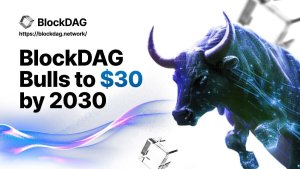NDFs could be the antidote to CFD fatigue. The forgotten forwards are on the rise in Asia
South East Asia’s NDF trading is booming. War-torn CFD providers could easily get in on the action as growth of this ignored alternative is absolutely obvious. Want to be big in Asia? This is how.

Non deliverable forwards (NDFs) enjoyed only a brief encounter with the FX and CFD industry, with a few firms offering them for a short time around the beginning of last decade.
A very small number of retail FX brokerages viewed NDFs as a potential alternative to CFDs, and quite prudently so.
Today, however, there is little mention of NDFs at all by any brokerage, and the appetite for offering them has died out well and truly, however it may well be that firms are missing a trick here.
When looking at the timeline of the retail FX industry, in the general scheme of things it was not a very long time ago that many companies in the OTC derivatives industry were talking at great length about the possible rise to prominence of NDF contracts, and many firms sought to offer them, especially to a British client base, largely because of the flexibility of the proprietary platforms that British brokerages provide in order to facilitate CFD trading.
Unlike spot FX, an NDF has similar virtues that stand CFDs out as popular instruments, as an NDF is an outright forward or futures contract in which counterparties settle the difference between the contracted NDF price or rate and the prevailing spot price or rate on an agreed notional amount.
This type of trading has garnered its greatest popularity in regions in which forward FX trading has been banned by the government, usually as a means to prevent exchange rate volatility.
In established markets, NDFs were heralded as a means by which OTC FX firms could mitigate the risk of being exposed to, and exposing their retail clients to, sudden and unexpected bouts of market volatility.
Strangely, NDF trading did not catch on to quite the extent that CFD trading has done, with a loyal and dedicated client base in Britain trading CFDs with vigor on a largely domestic market, via established, often publicly listed British electronic trading giants, especially when you consider the global regulatory disdain for CFDs that ensued the disinterest by many FX firms in NDFs.
In emerging markets, however, things are somewhat different and have been for some time.
In South East Asia, a region which many brokers have been concentrating on with a view to conquering, NDFs have been overlooked.
Instead of attempting to onboard pyramid-like networks of IBs and sub-IBs with churnable spot client bases, NDF trading clientele would be well worth seeking out.
While the volume of spot trades have increased during the course of this year compared to four years ago, the expansion was less strong compared with other instruments hence the share of spot trades continued to fall, to 30% in 2019, compared with 33% in 2016. By contrast, FX swaps continued to gain in market share, accounting for 49% of total FX market turnover in April 2019. Trading of outright forwards also picked up, with a large part of the rise due to the segment of NDFs.
This has been a dynamic that has been consistent since 2016. For example, in Malaysia, the NDF market is such a pinnacle of interest that it created a massively disruptive influence, and attracted attention from the Bank Negara Malaysia – the nation’s central bank – and more specifically the Financial Market Committee (FMC) which oversees trading activities in Malaysia at central government level.
Yet brokerages looking to onboard strategic partners in Malaysia tend to focus, with a degree of futility, on spot FX and miss out on the NDF opportunity.
In the last year, trading in outright forwards rose by a notable 43% to $999 billion per day. Trading in medium-term tenors for outright forwards is more common than for FX swaps, and 61% of the turnover in outright forwards was in maturities of over seven days and up to three months. The US dollar was on one side of 88% of outright forwards transactions.
Within the various instrument categories within outright forwards, NDFs accounted for a significant share of the increase in trading between 2016 and 2019, reflecting in particular the strong activity in Korean won, Indian rupee and Brazilian real NDF markets.
It is worth a quick look at the Indian Rupee futures contract’s massive prominence on Dubai’s emerging DGCX exchange – it is by far the exchange’s most traded product.
One entity that has raised the subject of importance of NDFs this month is the International Monetary Fund.
Jochen M. Schmittmann and Chua Han Teng produced a full report just last week at the International Monetary Fund stating that Non-deliverable forward (NDF) markets in many Asian emerging market currencies are large, rapidly growing, and often exceed onshore markets in transaction volume. NDFs tend to price significant depreciation during market stress episodes.
The IMF says that spillovers from NDFs to onshore markets are a policymaker concern. IMF analysis shows that influences tend to run both ways after controlling for differences in timezones between markets. For the COVID-19 pandemic there is some evidence of NDFs leading onshore markets for a few currencies. Policy approaches to NDFs vary widely across Asia from close integration with onshore markets to severe restrictions on NDF trading.
The question of pricing relationships between NDFs and onshore FX markets is an empirical the IMF analyzed pricing relations for the Asian currencies with the most important NDF markets, the IDR, INR, KRW, MYR, PHP, and TWD.
The IMF employed a vector error correction approach to analyze the equilibrium and the lead-lag relationships between markets. The IMF innovates by exactly time-matching NDF and onshore price quotes, unlike most of the existing literature which uses end-of-day quotes across time zones. We show that this is crucial—with the traditional approach of using price quotes at different times of the day we find that influences tend to be from NDFs to onshore markets, but with careful time-matching of quotes, influences tend to run in both directions consistent with price discovery in onshore
and offshore markets. For the COVID-19 pandemic period, we find some evidence for an increased influence of NDFs on onshore markets for a few currencies.
Turnover data for NDFs is mostly available from surveys, given the over-the-counter nature of NDF trading. A shift to centralized trading and clearing in recent years also made data from clearing and settlement service providers available.
Data sources vary in coverage and frequency but the relative importance of currencies across sources is broadly consistent. Data on the investor base for NDF markets is not available, but it is thought to mainly comprise multinational corporations, portfolio investors, hedge funds and
proprietary foreign exchange accounts of commercial and investment banks.
The Bank for International Settlements (BIS) Triennial Central Bank Survey provides the most comprehensive information about the size and structure of global NDF markets but is only available on a triennial basis and for a limited number of currencies (in Asia: CNY, INR, KRW, TWD).
Major trading centers for NDFs publish surveys of trading activity in their jurisdiction with varying coverage and frequency, London and Tokyo being major centers.
Depository Trust & Clearing Corporation (DTCC), a clearing and settlement services provider, provides data on NDF trades on its systems. The IMF presented DTCC and authorities’ data in its report to cover IDR and MYR which are not included in the currency breakdown of the most recent BIS survey.
Asia accounts for three of the top four NDF currencies by volume globally according to the BIS survey. The INR, KRW, and TWD accounted for 55% of total daily global NDF turnover of USD258 bn as of April 2019 (Figure 1). The CNY accounts for another 5% of global NDF turnover. Outside of Asia, the Brazilian real (14%) and the Russian ruble (2%) have sizeable NDF markets. NDF trading in INR, TWD, and KRW experienced the fastest growth since 2016, rising 204%, 168%, and 100%, respectively.
Relative to other foreign exchange products—spot, outright forwards, swaps, options, NDF trading volumes are large for INR, KRW, and TWD. For these currencies, NDF volumes far exceed all other FX products including spot trading. This underscores the importance of NDF markets for price discovery and relevance from policymakers’ perspective.
Bank of England NDF volume data for London, the world’s largest NDF trading hub, is broadly in line with BIS data (Figure 3). The KRW and INR are the most widely traded NDFs in London. In Tokyo, an important NDF trading hub in Asia, the KRW, INR, TWD, and IDR are the most widely traded NDF currencies.
Among South East Asian currencies, the IDR is the most traded NDF. IDR monthly NDF turnover exceeds USD100 bn based on DTCC data, more than spot and onshore deliverable forward transaction volumes combined (Figure 5).8 The MYR boasted a large NDF market until Bank Negara Malaysia reinforced a ban on offshore NDF trading in November 2016.
There is no Thai baht offshore NDF market due to the presence of an offshore deliverable DTCC data likely substantially understates total NDF trading. For currencies where both DTCC and BIS data is available, BIS data is larger by a factor of 2 to 4.
Philippine peso NDF volumes are small, reflecting the relatively small foreign participation in local asset markets and shallow financial markets in general.
So, given the opportunity, it may be time to revive the NDF.








